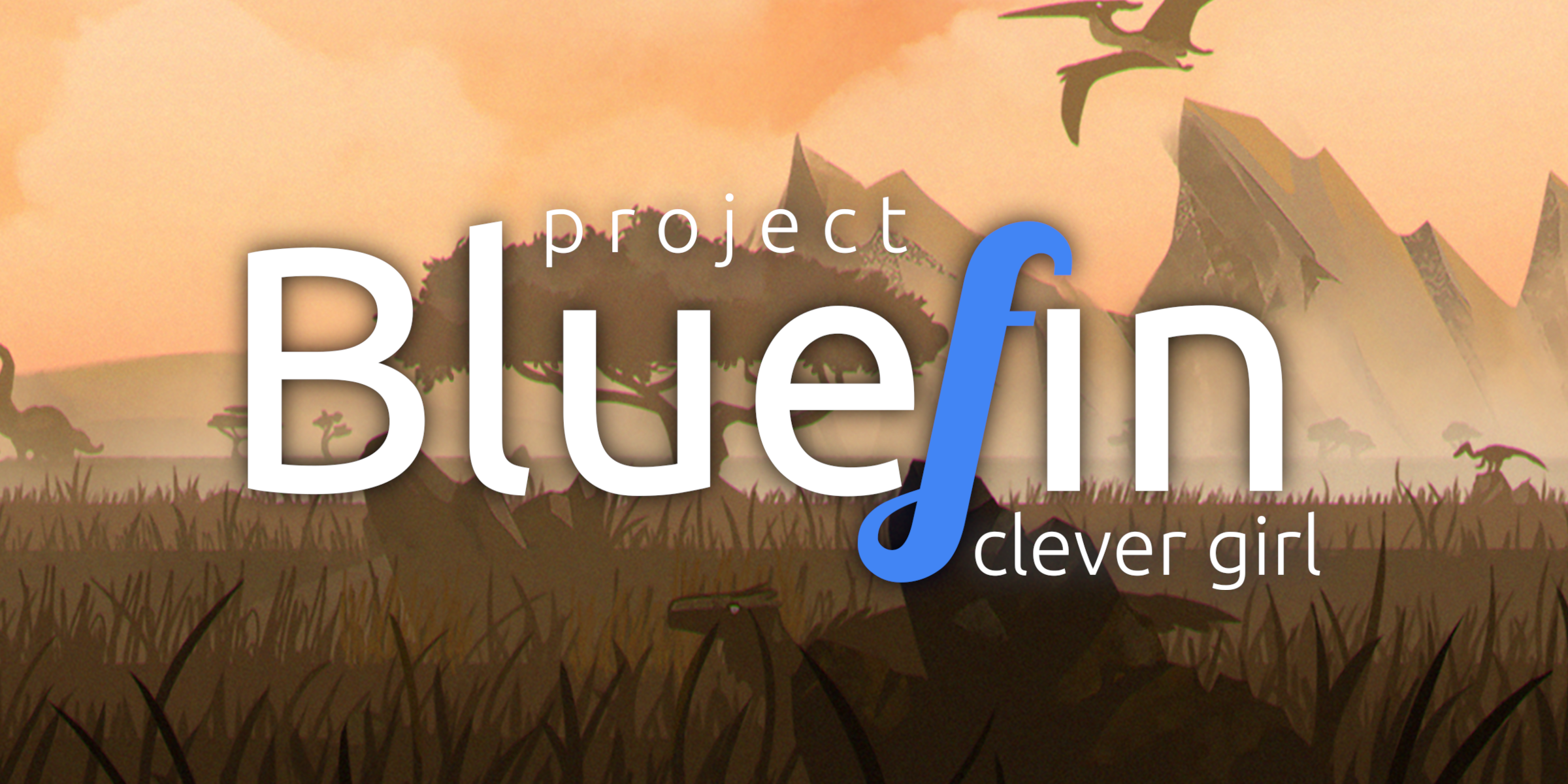- cross-posted to:
- [email protected]
- [email protected]
- cross-posted to:
- [email protected]
- [email protected]
OCI images that you can turn into a full-fledged developer workstation shipping Devbox, Nix, Homebrew, devcontainers and DevPod with one command. Pretty swanky!
I have long loooooong ago given up on distro hopping because, at the end of the day, most distros are close enough to each other that it doesn’t really matter which one you choose at the end of the day. These new immutable ones though… They seem cool as hell. I need to give one a go someday.
Same, I found Arch over a decade ago and stopped looking.
I feel like I left arch a decade ago. 😄
It was rough going around the time of the systemd transition and needed something more consistently reliable. I’ve been on Mint ever since.
Arch has rarely ever given me problems…that I didn’t cause myself 🤣
I’ve been distro hopping a bit lately trying out some immutable distros like nix,fedora kinoite,microos,but I always end up back on arch. I think that settles it and I should just stop,cause distro hopping is a waste of time.
distro hopping is a waste of time.
Very much so. There are limitless things you can do with a computer. Installing a new OS for me falls squarely in the annoying and tedious categories… There are so many more interesting things to put effort into.
Nix was my stop
I found out about it a year or two back but never checked it out, Arch is my go-to since I’ve been using it for so long. Even after using RHEL/CentOS/Fedora at work for 5 years, Arch is still what I like better.
Yeah there isn’t much of a difference as there used to be, now it’s mostly about package management and what is installed by default, not that that’s bad, choice is always great.
Distro hopping always leads back to debian
99% of the time, whatever drew you to a shiny new distro could be achieved in debian with minimal effort
Debian was the reason, why I’ve started distro hopping, in the first place
deleted by creator
I mean, if you are not happy (and dont fear your home getting messed up with configs) you can just rebase an immutable OS to another one, one reboot and you are from GNOME to KDE to Sway to whatever
“the next generation cloud-native”
that’s as far as I got. Cloud native is an immediate, non-negotiable red flag for me
They need to work on their branding. “Cloud Native” triggers images of subscription services and data mining. But the idea here is that the whole OS and its components are all sort of containerized, so you can just pull pre-configured “cloud” images that are guaranteed to work out of the box to your machine.
That is one of the dumbest ways I’ve ever seen someone try to connect their product to the cloud buzzword. By that logic all stable linux distros are cloud since you pull the packages with preconfigured sane defaults from the repos.
It’s hard to explain until you’ve used it, but in my experience I think this is much different than a traditional Linux distro. Every other distro I’ve tried has (to some extent) dependencies that can get out of whack, configuration drift that makes it hard to get things to work sometimes, random codecs or drivers or other things you need to install to get a system working as it should, etc. In the “cloud native” model, all the packages, drivers, etc. are built and tested in the cloud. So when they arrive on your machine, they “just work” and updates are handled automatically - it’s great. Maybe not great for tinkerers, but great for regular users who just want to use their computer.
the cloud is just someone else’s pc. if it can work in my machine, it can work there. The hard part of cloud stuff is the stuff outside your image. setting mount points, port redirections etc. When stuff doesn’t work, you usually don’t fix it in the image, but probably some configuration of the container.
Why?
The CNCF has a number of awesome projects that live up to FOSS values.
CNCF projects themselves are indeed FOSS, but “the cloud” as it is most commonly interacted with, by tech workers, are enormous collections of closed-source systems run by Amazon, Google or Microsoft (all under antitrust investigation either now or in the past).
Okay right but why would “cloud native” as the community’s marketing for it be considered a red flag. Someone who doesn’t know better would think oh “cloud native” Kubernetes is evil. When really the moniker mostly means it was designed to be highly scalable, to interface with public cloud API’s, among many other decisions that differentiate traditional enterprise I.T. software (which like Cisco products) could have its own fair share of “evilness” to be avoided.
My point was that O.P. should clarify why that’s such an immediate red flag for them.
To future readers I consistently use “cloud native” software on my bare metal computers at home. It’s mostly a marketing term to reflect “modern ness” in software features to be run on a public cloud.
In my experience cloud native doesn’t mean it’s on Google, or Microsoft’s privacy stealing software because they’re marketing to you that you can host it yourself on the public cloud.
I won’t speak for the OP, but yes it is a fair question about the automatic red-flag. There are characteristics of software described as cloud-native that are considered undesirable by some.
These could range from things as high level as an objection to how projects are funded, down to things like distaste for code complexity required to support opaque HTTP APIs over standardised protocols.
Can someone ELI5 why this is so great? I watched the video and I hardly get it. (Linux user for 18 years)
Because it uses OCI images, it auto-updates like a Chromebook, and you can switch between modes, like say a gaming mode that’s a full SteamOS replacement, to a mode that gives you an entire development environment without needing to install and configure these layers or stacks of capabilities yourself.
That’s very powerful. For cloud native developers like myself who are used to working with container images as the deliverable artifact, this makes that workflow very easy. Podman is included. You can create entire development environments at will that are totally “pure”: no side effects because everything you need is in the container. That’s a Dev Container.
I’m still having a hard time grasping this, probably because I don’t understand OCI images. How would this be different than say using fedora with docker to spin up containers with stuff I need?
Hmm, well Fedora on its own (so no Silverblue) is very much your classic way of shipping a distro. That tends to mean that, over time, “cruft” accumulates as you upgrade your system, uninstall/reinstall packages, etc. They leave bits of themselves behind that can cause unwanted behavior.
Fedora Silverblue, that Bluefin is based on, treats the entire system layer as “immutable”. Basically, it ensures consistency so that upgrades and package upgrades don’t leave the system in an inconsistent state.
What Bluefin adds on top of this is a set of opinionated, pre-configured layers suited for getting particular groups of tasks done. Those layers are also immutable and tested as a whole, which makes shipping those layers at velocity easy (faster upgrades, less wonky behavior on upgrade) and easy to swap between, so you can go from gaming to developer mode without worrying about an accumulation of cruft.
Is that helpful at all? There’s also this announcement blog post, which I found very helpful in understanding the value proposition.
Yes!! Super helpful. Thank you!
Pretty much the same however it would be like you’re working inside a docker container to cover and build your container images.
In this setup your entire os is a container also. It’s just another layer. This is the same way the Steam Deck distributes updates and many of us believe to be the future for the next wave of Linux users.
Like most others in this thread, I’m having trouble understanding what this is. Fedora Silverblue with dev-related pre-installed stuff? (rhetorical question)
Their presentation feels like NixOS. You open their webpage and the entire thing is unclear. If even the target audience doesn’t get it, they probably won’t use it out of their own volition or without hand-holding.
Dunno if there are Fedora maintainers on the fediverse or reading this thread, but IMO they should tell their BlueFin team to fix the marketing. Most people don’t get what they’re trying to sell.
Not sure if it’s right, but it seems to me this is really just a bunch of preconfigured fedora instances for specific use cases with containerized packages you can mix and match to your needs. Then they slap on a bunch of buzz words to make it sound novel.
Co-maintainer here, yep, you got it!
You gleaned more from it than me. I have trouble understanding exactly what it is.
The idea is very interesting. The marketing is the worst I’ve seen in a decade, easily.
I quote:
“Or she may disembowel us on the way. Clever Girl.”
Thinking the evolution metaphor gives you license to say that and sound acceptable, is total insanity. Absolutely out of place, touch,
You know this is a reference to Jurassic Park, right?
That’s exactly the point. Referencing pop culture won’t make it sound in good taste. The whole site has a metaphor density over 9000.
I have to admit the fact that I got the metaphor BEFORE I got all of the technical aspects might be a sign that it was given more attention than projects normally do. I personally love how fun and dorky it is though
I genuinely don’t understand the value proposition of, over just regular silverblue. As far as I can tell, they have a opinionated desktop setup out of the box, and a shell script that is a bunch of aliases to things you might want.
Co-maintainer here. That’s basically what it is. The value proposition is included hardware enablement on the image (nvidia drivers, controller support, etc). and flathub ootb.
In the end, it is just an extra layer of testing. Silverblue only provides the base imgaes and confirms its stability. uBlue/bluefin adds the layers on top to the image and tests their stability with the base image before pushing the combined image to users. It is good for people who don’t want to do the layering and want something with those defaults out of the box.
Edit: for clarity, my comment is mostly directed at ublue or universal blue, which is what bluefin is based on.
I think the really value comes from the ability to easily roll new custom images and for the community to collaborate on those images to produce images that require minimal layering after the application locally.
deleted by creator
dev oriented distro it looks like? dunno about the net installer aspect… but I’m really new to linux too so maybe it’s a nice feature?
Fedora based 🤮🤮🤮
more like fedora cringed lmao
If anyone stumbles upon this and was confused like me, I found this link to be a super clear explanation of OCI Linux delivery- https://universal-blue.org/introduction/
Probably my next distro! Can’t wait to try it out. The only next steps I would take is getting k8s into manage my services by default.
Does that site run unusably slow for someone else?
Same
yeah takes forever to load
Gnome
Visual studio
Bleh








